1942 First Edition War Office Map Of Paris France Combat Map


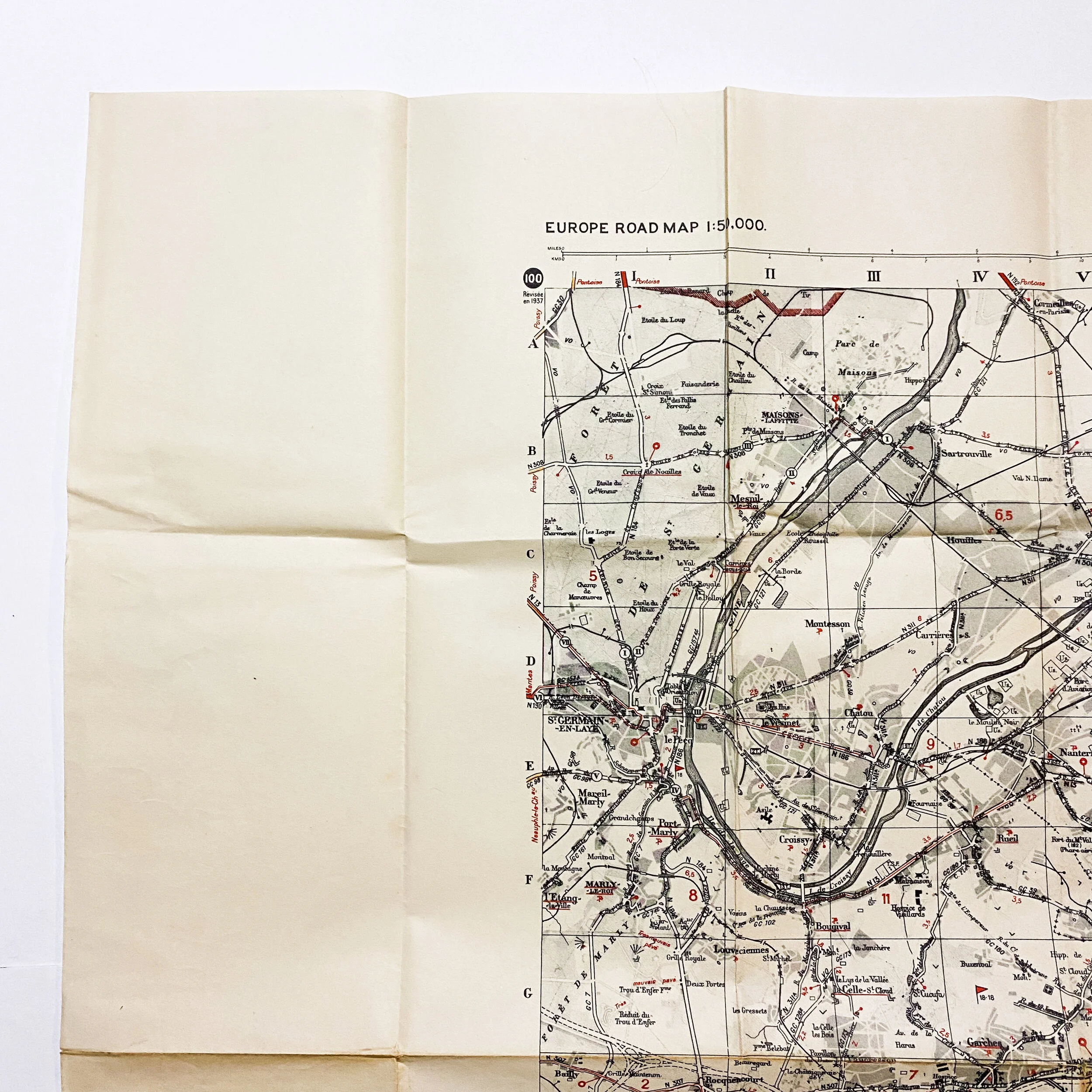
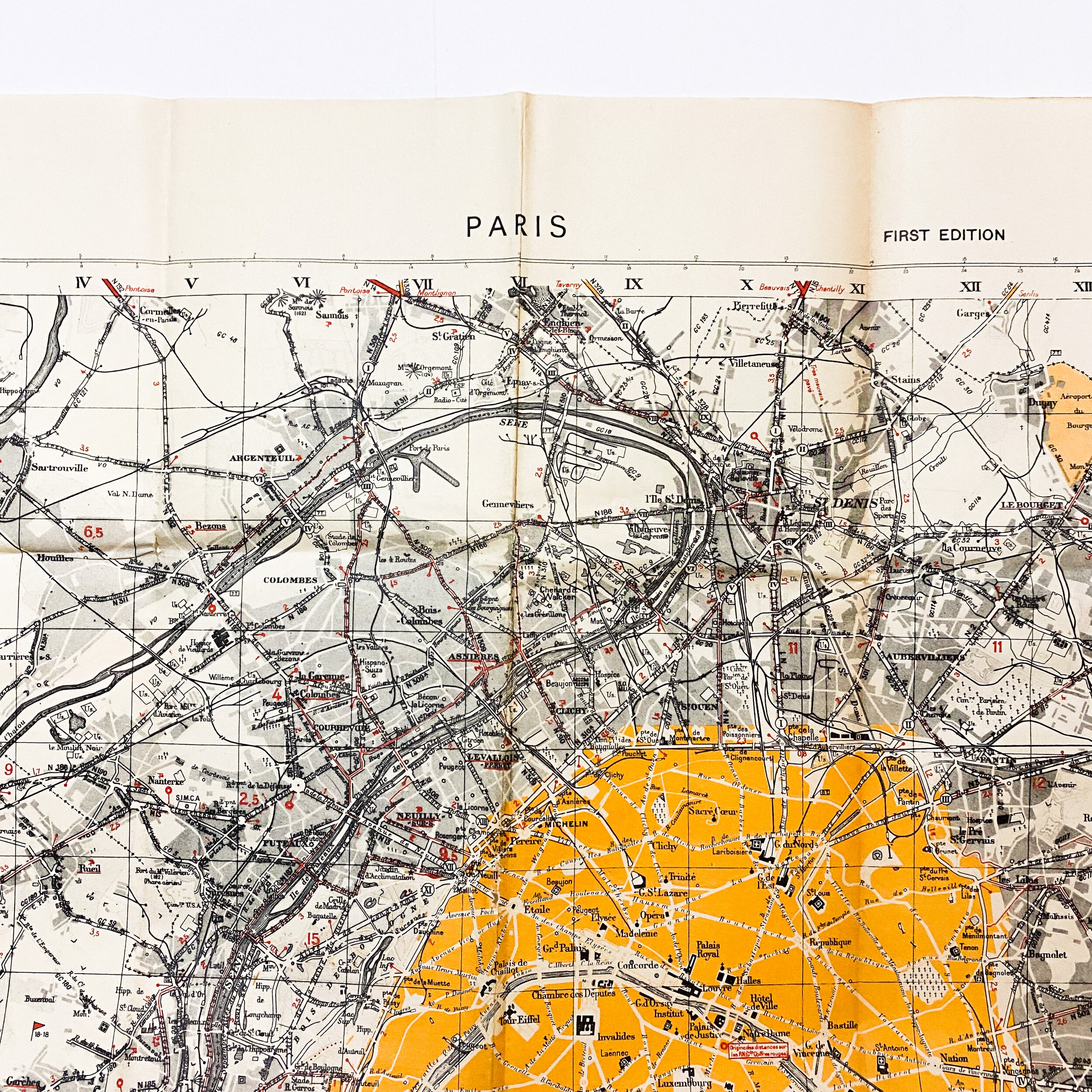




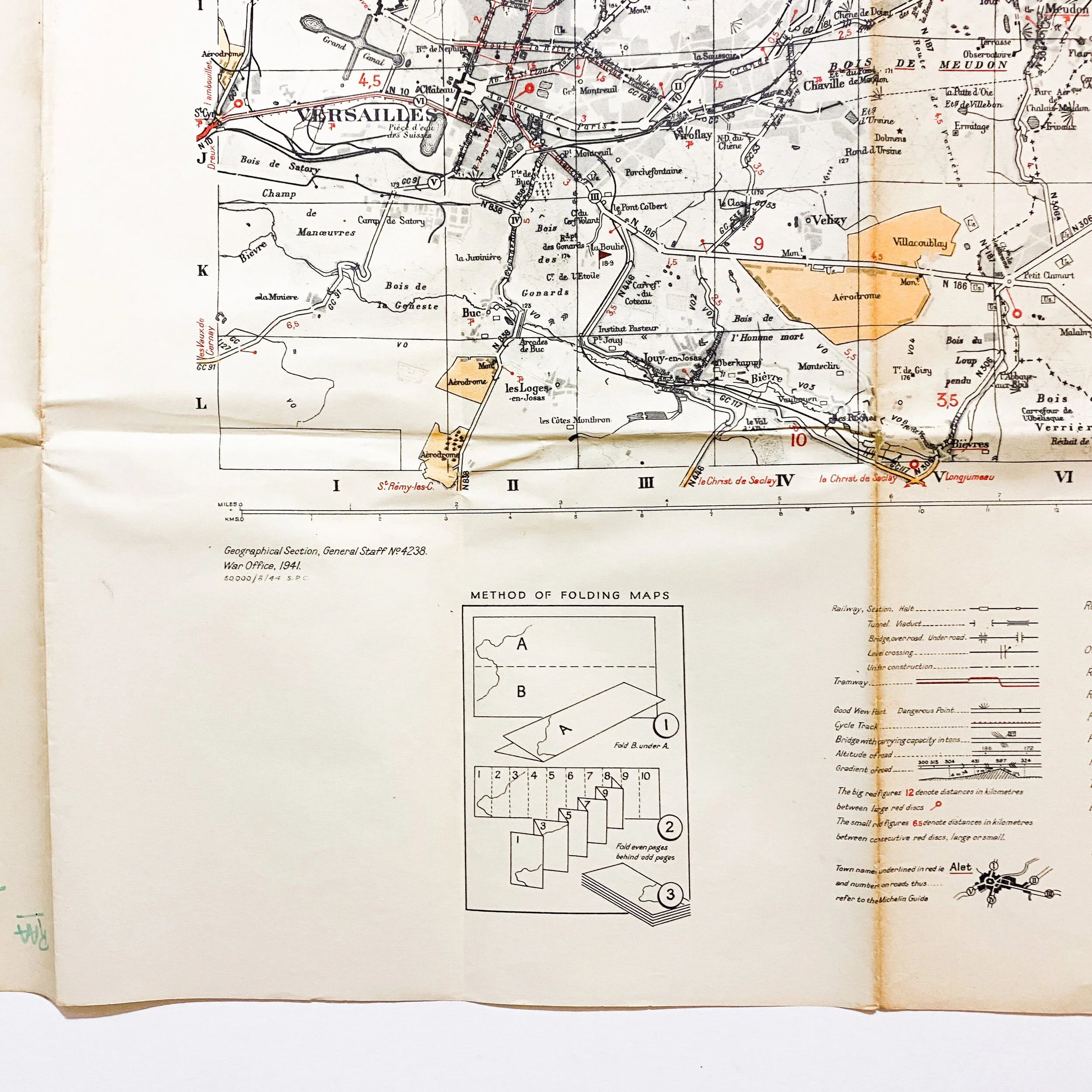
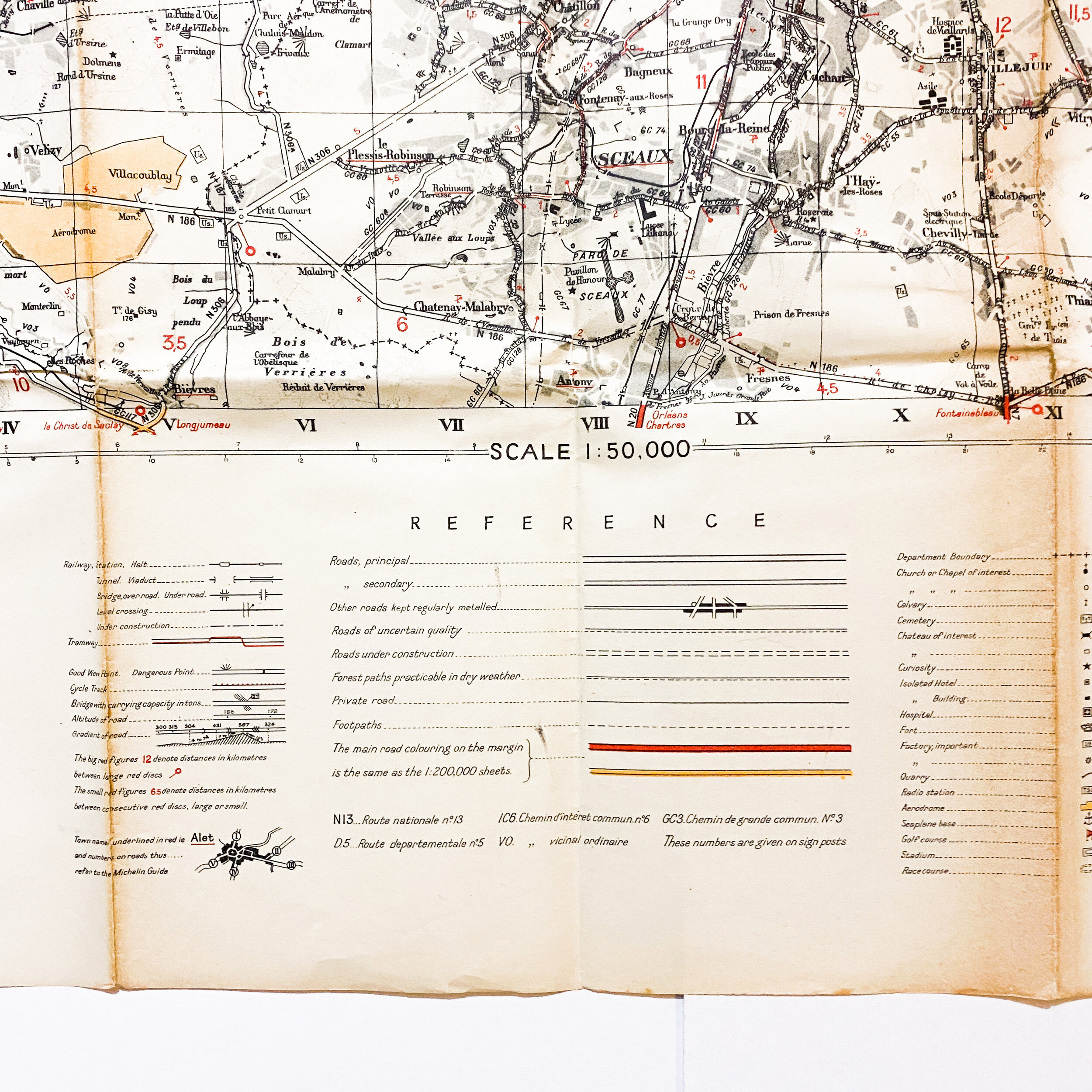
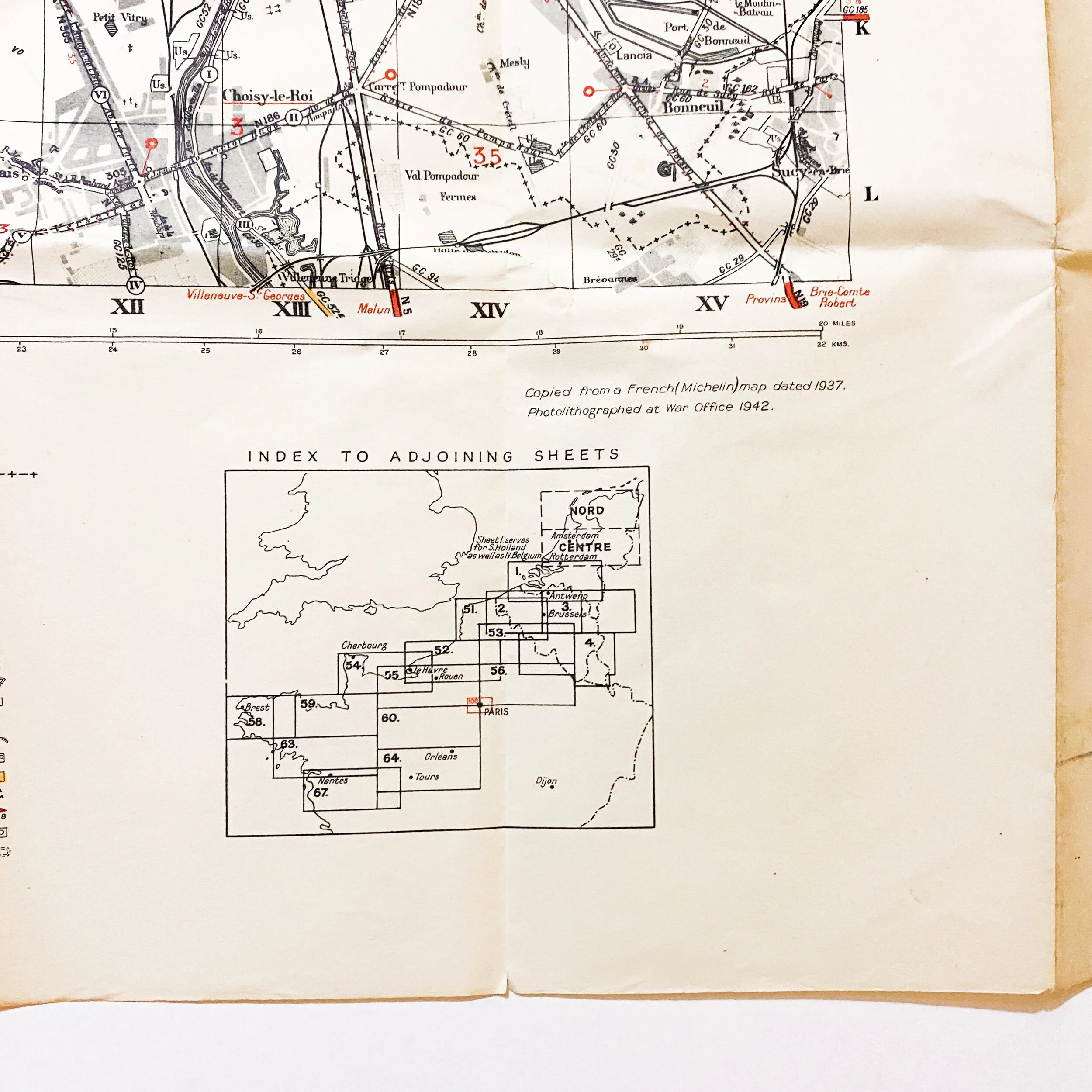


1942 First Edition War Office Map Of Paris France Combat Map
This original 1942 dated, 1st edition, war office map is in near mint and sturdy condition with annotations along the side from the Allied soldier carrying this map. This map was created using French plans dated 1937. A special feature of this map shows the detailed grid sectors of the roads and buildings with a unique letter guided sector of Paris, France. The Allied forces wanted to give the infantry soldiers on the ground attacking Paris the most updated information. Given the grid lines and mark points, this map would have been placed in a map protector and carried by an infantry soldier to mark and label objective points on the German occupied city.
Liberation of Paris:
On 24 August, delayed by combat and poor roads, Free French General Leclerc, commander of the 2nd French Armored Division which were equipped with American M4 Sherman tanks, halftracks and trucks disobeyed his direct superior, American corps commander Major General Leonard T. Gerow, and sent a vanguard (the colonne Dronne) to Paris, with the message that the entire division would be there the following day.
The 9th Company of the Régiment de marche du Tchad which was nicknamed La Nueve (Spanish for "the nine") consisted of 160 men under French command, 146 of which were Spanish republicans.[14] They were commanded by French Captain Raymond Dronne, who became the second uniformed Allied officer to enter Paris after Amado Granell. At 9:22 p.m. on the night of 24 August 1944, the 9th Company broke into the center of Paris by the Porte d'Italie. Upon entering the town hall square, the half-track "Ebro" fired the first rounds at a large group of German fusiliers and machine guns. Civilians went out to the street and sang "La Marseillaise". The leader of the 9th Company, Raymond Dronne, went to the command of the German general Dietrich von Choltitz to request the surrender.
The 4th US Infantry Division commanded by Raymond Barton also entered through the Porte d'Italie in the early hours of the next day. The leading American regiments covered the right flank of the French 2nd Armored and turned Eastward at the Place de la Bastille and made their way along Avenue Daumesnil heading towards the Bois de Vincennes. In the afternoon the British 30 Assault Unit had entered the Porte d'Orléans and then searched buildings for vital intelligence, later capturing the former Headquarters of Admiral Karl Dönitz, the Château de la Muette. While awaiting the final capitulation, the 9th Company assaulted the Chamber of Deputies, the Hôtel Majestic and the Place de la Concorde. At 3:30 p.m. on 25 August, the German garrison of Paris surrendered and the Allies received Von Choltilz as a prisoner, while other French units also entered the capital.Near the end of the battle, Resistance groups brought Allied airmen and other troops hidden in suburban towns, such as Montlhéry, into central Paris. Here, they witnessed the ragged end of the capital's occupation, de Gaulle's triumphal arrival, and the claim of "One France" liberated by the Free French and the Resistance.The 2nd Armored Division suffered 71 killed and 225 wounded. Material losses included 35 tanks, six self-propelled guns, and 111 vehicles, "a rather high ratio of losses for an armored division", according to historian Jacques Mordal.
Despite repeated orders from Adolf Hitler that the French capital "must not fall into the enemy's hand except lying in complete debris", which was to be accomplished by bombing it and blowing up its bridges, Choltitz, as commander of the German garrison and military governor of Paris, surrendered on 25 August at the Hôtel Meurice. He was then driven to the Paris Police Prefecture where he signed the official surrender, then to the Gare Montparnasse, Montparnasse train station, where General Leclerc had established his command post, to sign the surrender of the German troops in Paris. Choltitz was kept prisoner until April 1947. In his memoir Brennt Paris? ("Is Paris Burning?"), first published in 1950, Choltitz describes himself as the saviour of Paris.